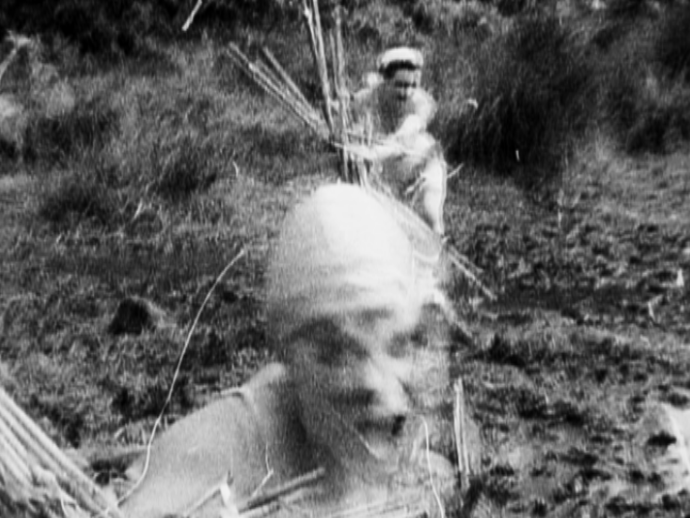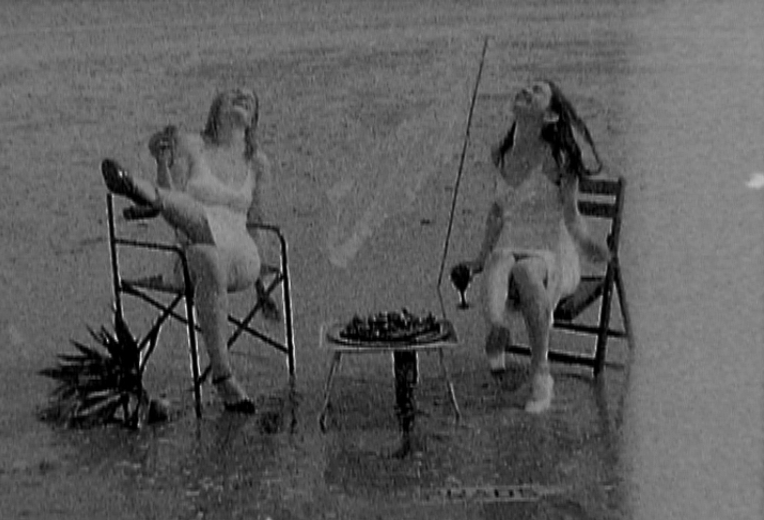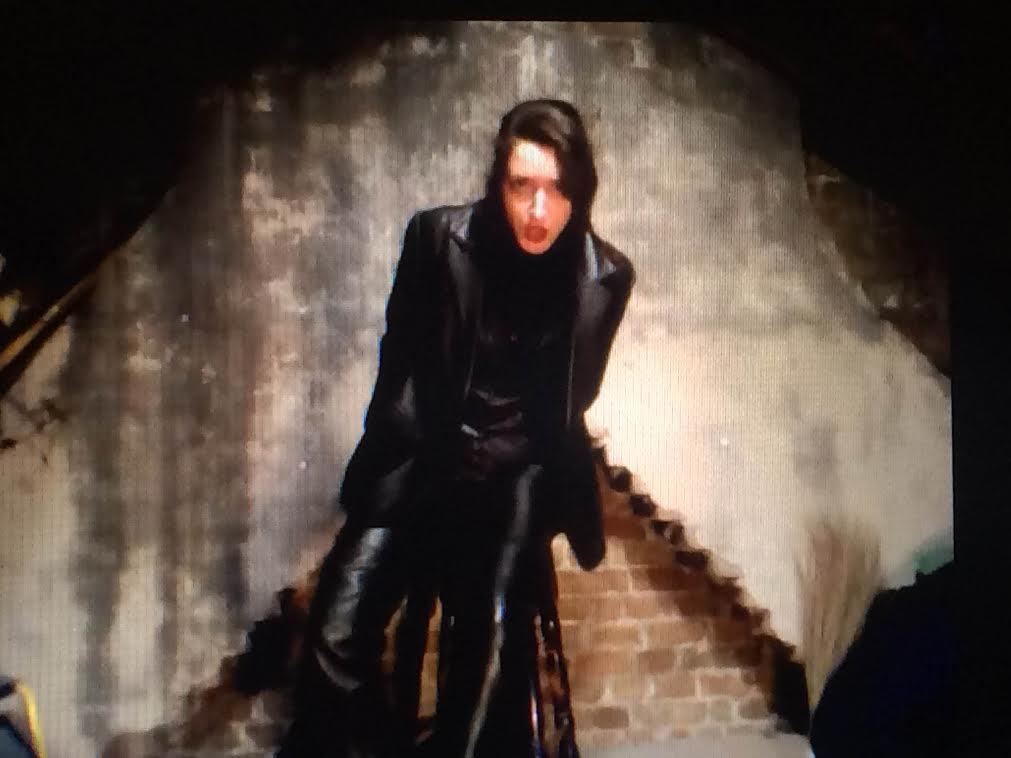Often in the arts, the term “hysteria” is used much like a bit of musical terminology — a way of describing the pitch, the tempo, the style of a work. Art which centers on an “aesthetics of hysteria,” to such an extent, might include the films of John Waters, Ken Russell, and Ryan Trecartin, the performances of Valeska Gert, the music of Diamanda Galas and Wagner, and so on. But it always worth repeating, and remembering, that “hysteria” is a fundamentally gendered term — culturally and socially gendered, etymologically gendered. The origins of the word, “wandering womb,” points at a long history (and a present) of abhorrent social and medical practices. Even that apparently abstract, musical sense of the term bears (and bares) manifestations of a society which has for so long been party to the feminization of mental health and the trivialization of women.
“Female hysteria” was the subject of an exhibition by filmmaker and photographer Susu Laroche. With a vast back catalogue of work, a reputation for fierceness and artistic integrity (she has been a serial shunner of many mainstream platforms), not to mention a sometimes maddeningly cryptic website, Laroche, for some years now, has occupied something of a cult-like status with a diffuse and international base of devotees both online and off. (Rumors naturally abound: one fan recently informed me she lived in recluse in a dilapidated friary and noted bat sanctuary just outside of Gretna Green, which I happen to know isn’t the case.)


Her exhibition, curated by Ed Leezon, comprised of “four hysterical episodes in one room,” all of which featured radical performance artists New Noveta (Ellen Freed + Keira Fox). “These films explore ‘irrational’ response to traumatic events. After a car crash, a woman runs back to the car to grab her handbag and, rather than escaping the wreck, the women brawl over a timepiece. After a flood which wipes their entire house away, the two women find the remains of their kitchen and have a drink, celebrating the destruction and walking away into a new beginning. Society might offer guidelines for how to deal with grief, pain and loss — mourning for set periods of time for example — but what happens when it doesn’t feel right to do it that way? There is no right way.”
If “collaboration” has garnered a kind of Arts Council starchiness of late, the more vigorous sense of the term is apparent throughout the expanse of Laroche’s work. Indeed, her exhibition led to “a feminar on Female Hysteria”, organized by Laroche, “which had contributions from lots of incredible women including Sidsel Meineche Hansen, Liv Fontaine, Jumanah Younis, Helen Knowles, Mary Hannity, Georgia Horgan, and Sharon Kivland: a combination of women’s aid workers, writers, academics, and artists who covered a cross section of hysteria, from domestic abuse and ‘gaslighting,’ mourning, the censorship of women in heightened emotional states, exclusion of women from the labor force and annexing to lower paid positions, and the political status of women’s cum after the 2014 UK female ejaculation ban in porn.”


“I’m interested in hysteria in front of the lens.” A particular fascination is to be found in Isabelle Adjani’s iconic performance in Possession, which Laroche describes as one of the most important depictions of hysteria on film: “The film, based on Zulawskis own messy divorce, peaks at an extraordinary scene of a miscarriage in an underpass, bookmarked by heartbreaking attempts at communication between the ex-lovers where Neill (playing her on-screen husband) at one point literally tells Adjani how she must feel whilst she responds in sounds which barely resemble words, breaking every ear drum and microphone in the vicinity. After working on this film Adjani said to a French magazine that she suffered Post Traumatic Stress Disorder as a result and was in therapy for several years. The line between acting and real life is violently crossed at this point, and Adjani becomes a victim of her craft, a victim of the filmmaker who is working through his own traumatic divorce, and the victim of Sam Neill’s mansplaining and the projection of Adjani’s new lover literally being a monster. Zulawski is a filmmaker whose body of work pretty much repeatedly focuses on fierce women and traumatic breakups, and Adjani is an actress well known for her portrayals of ‘crazy.’ And yet at this point, histrionics is no longer a matter of portrayal, but something much darker. And although I have a great reverence for his work it is unfortunately not an isolated case; his film, Szamanka, almost immediately banned in Poland for its explicit nature, also ruined the life of the amateur actress who mutely walked through the main role.”

Another particular interest lies in George Didi Huberman’s book, The Invention of Hysteria. “It explores the role of photography and theatrics in Jean Martin Charcot’s (at that point) groundbreaking analysis and classification of ‘hysterics.’ Charcot worked at the infamous hospital Salpetriere, which was known as a whirlwind of female hysteria — although he is known to have presented several cases of ‘male hysteria’ too. He was accused of cultivating hysteria rather than curing it, to the point that if a symptom which patients knew to be of interest to Charcot would disappear they would grow anxious and believe he would no longer be interested in them. Charcot would also utilize his patients in theatrical productions, performing their hysterical symptoms to an audience, encouraging a dark pantomime of mental illness. The symptom becomes simulated and histrionics get more attention than ‘real pain.’ The most fascinating thing to me is the interchange between real and simulated. Baudrillard writes in Simulacra and Simulation of the production of Apocalypse Now being real war. The production and the portrayal are indistinguishable. What begins as a theatrical and faithful depiction of the war becomes a real journey to the heart of darkness — likewise with Herzog’s Aguirre.”
It is worth noting, as Susu points out, that there was historically the much rarer diagnosis of “Male Hysteria”: “I’m interested in how the same behavior in men and women can be classified so differently. The wandering womb vs railway spine. Both are located inside the body and yet the cause is physical, comes from within the female body whilst it’s external to the male body: a female’s hysteria originates in her physiology whilst a man’s is a response to ‘work.’ Even the remedies are telling; women were placated with the first form of the dildo/vibrator whilst men were treated for the train crashes they experienced, which were frequent, and classified as the earliest form of Post Traumatic Stress Disorder.”
In other cases, male hysteria was commonly associated with homosexuality — itself conflated with femininity — demonstrating the gendered nature perception of the diagnosis. Indeed, what the application of the term really designates is who (and what) is considered superfluous, and perhaps even to what extent. Queer men are indeed more frequently labelled hysterical than straight men. And what about race? You need only consider colonial descriptions of “hysterical natives” to make this apparent, whilst hysteria has long been an essential ingredient in constructing the image of the angry black woman.
The word is one which easily operates as a barometer for what western society, loathing all that exceeds it, deems excessive: “The hysterical woman is not just furious or oversexed, but merely a woman confronting the constant undermining of herself. Of the image that patriarchy has constructed for the personification of ‘excess.'”
Credits
Text Shola von Reynolds
